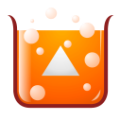Write Better Science:
Results
Your results section is simply the presentation of your recorded measurements and observations. These will be used later in the data analysis section, and discussion. Observations are one of the key pieces of evidence that could explain why your results did not go as planned, or did not work.
Tables
You must present your raw data in a table. Tables need to follow the scientific format for a report:
Tables
You must present your raw data in a table. Tables need to follow the scientific format for a report:
- Table #, followed by an appropriate title or description of the table. Sometimes you may have many different tables in an experiment, and will need to distinguish between.
- First column should be your independent variable (the one that you are deliberately changing to see what happens)
- The following column(s) should be your dependent variable (the effect/response that you are measuring)
- Column headers (the titles for each column) must present the units - if relevant - for the data in the rows below. These are things like meters (m), kilograms (kg), etc.
- No units are to be written within the body of the table. Only numbers/data.
|
Good example
Table 1: Surface temperature of different coloured cars
|
Bad example
|
